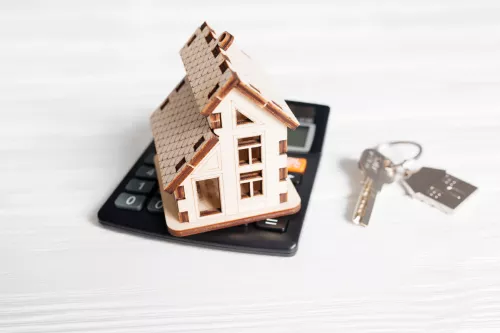The moment of buying a home is a dream for many. But to make it come true, you will have to get familiar with loan terms and processes, when the loans are applicable, and how they work. Here, we will discuss the concept of UFMIP and go through its relevance in the context of home loans, among other related questions about it.
What does UFMIP mean?
UFMIP is short for Upfront Mortgage Insurance Premium. It is a specific type of insurance premium required for Federal Housing Administration (FHA) loans. UFMIP is a one-time fee (1.75% of the base loan amount, according to recent data) paid at the closing of the loan, and it has one primary purpose: Protect the lender in the event that the borrower is unable to repay the mortgage.
How UFMIPs Work

By choosing a conventional mortgage to finance a property, the down payment can be as much as 25% or more in the loan closing. This value can be a barrier to first time home buyers or to those who have low credit scores. With an FHA loan, the borrower just needs to make a down payment of 3.5% of the home’s purchase, which makes it riskier to lenders but easier for borrowers.
Its calculation and payment work like this: If you wanted to get an FHA loan, you’d apply through a lender, and the FHA would guarantee the loan. At closing, you’d pay a UFMIP of 1.75% of your mortgage on top of the down payment to the lender. The UFMIP funds are then paid to HUD ( Department of Housing and Urban Development ) by your lender.
They help protect the lender and the FHA in case you default on your mortgage. UFMIP is calculated as a percentage of the loan amount. The exact percentage can vary based on factors like the loan amount and the borrower's loan-to-value (LTV) ratio.
So, let’s say that you intend to buy a property of $400,000. If you are approved for an FHA loan, you will certainly be required to pay at least 3.5% of the purchase price, which is $14,000. Over that, you will also have to pay a UFMIP of 1.75% of the base loan amount.
So, the property cost $400,000, and if you put down $14,000, you’ll pay 1.75% on $386,00, which is $6,755.00. This means you need at least $20,755.00 in hand ready at closing. You need to consider more money for other fees.
The impact of UFMIP on borrowers
For borrowers, UFMIP means a higher initial loan amount when it is financed, leading to slightly higher monthly mortgage payments. This can affect the affordability of the loan in the short term, but it enables many borrowers to access home financing who might not qualify for conventional loans.
Differences between UFMIP and AMIP
It's important to distinguish UFMIP from the Annual Mortgage Insurance Premium (AMIP) that is also required on FHA loans. While UFMIP is a one-time fee paid at the closing of the loan, MIP is an ongoing, annual charge that is calculated each year based on the remaining loan balance, and paid on a monthly basis.
The AMIP value varies depending on the loan amount, loan term, and LTV ratio, and its total cost ranges between 0.45% and 1.05%. On the other hand, UFMIP is a one-time payment 1.75% over the total amount of the loan made at the closing.
Pros and Cons of UFMIPs
| Pros | Cons |
| Enables Lower Down Payments: FHA loans, which require UFMIP, allow for lower down payments, often as low as 3.5% of the purchase price. This makes homeownership more accessible, especially for first-time buyers or those with limited savings. | Additional Cost: UFMIP adds to the overall cost of the mortgage. Even when financed into the loan, it increases the loan balance and, consequently, the interest paid over the life of the loan. |
| Credit Flexibility: FHA loans are more lenient with credit scores, and paying UFMIP is part of this package. Borrowers with lower credit scores, who might not qualify for conventional loans, can still access home financing. | FHA Loan Limitation: UFMIP is applicable only to FHA loans, which have their own limitations, such as loan limits that vary by region and may not cover higher-priced properties. |
| Protection for Lenders: UFMIP provides lenders with extra security, reducing the risk of lending, especially to borrowers with lower down payments and credit scores. This indirectly benefits borrowers as it keeps interest rates competitive. | No Cancellation: Unlike the AMIP, which can eventually be canceled on certain FHA loans with sufficient equity, UFMIP is a one-time fee that can't be refunded or canceled if you refinance into a non-FHA loan or pay off the mortgage early. |
People also ask
What is the relevance of UFMIP in the context of FHA loans?
The Upfront Mortgage Insurance Premium (UFMIP) is a fundamental component in FHA loans, serving as a one-time fee paid by borrowers (homebuyers) to the FHA for insurance coverage, which reduces lender (bank or financial company) risk. This fee increases the initial cost of the loan but can be financed, impacting the loan's overall balance and interest.
UFMIP makes FHA loans accessible to a broader range of borrowers by facilitating lower down payments, although it also increases the loan-to-value ratio (LTV). In contrast to Private Mortgage Insurance (PMI) on conventional loans, UFMIP may be required for the life of the loan, depending on specific terms, affecting both the loan's affordability and the decision to refinance.
How To Avoid Paying UFMI?
If you apply for a conventional mortgage that is not backed by the FHA you don’t need to pay UFMIP. But you will need to make a larger down payment of 20% or more of the home’s purchase price. But, by doing that, you will also avoid paying AMIP, which adds up over the course of your loan term.
What is the primary purpose of UFMIP?
Protecting the lender of default is the primary purpose of UFMIP. FHA loans often have lower down payment and credit score requirements, which can bring a higher risk for lenders. The UFMIP mitigates this risk by providing a pool of funds that the FHA can use to cover losses in case of borrower default.
What does LTV mean in real estate and how is it calculated?
The loan-to-value (LTV) ratio is a measure used by lenders to assess the risk of a mortgage loan. It compares the amount of the loan to the value of the property.
To calculate LTV, divide the loan amount by the appraised value or purchase price of the property, whichever is lower, and then multiply by 100 to get a percentage. For example, if you're borrowing $80,000 to purchase a home worth $100,000, your LTV ratio would be 80% ($80,000 divided by $100,000, multiplied by 100).

 Marcio Vasconcelos
Marcio Vasconcelos





